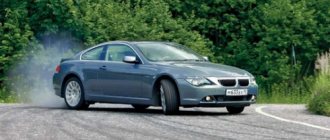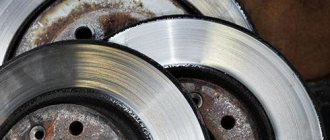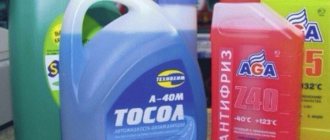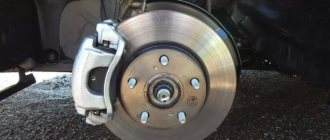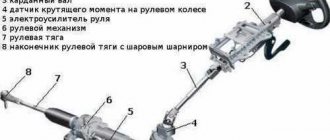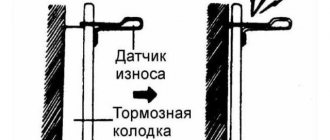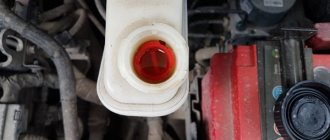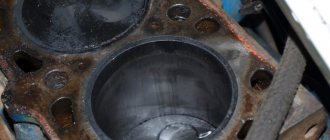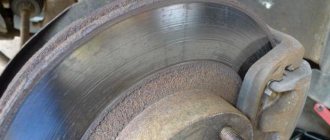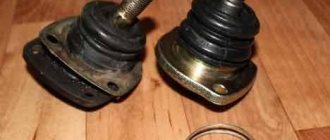All tire tests are carried out with new, just run-in tires. Any motorist can repeat the test in his own car and get a similar result. But only if the tires on his car are relatively fresh. The fact is that as the tire wears out, all its indicators change, and not for the better.
What kind of wear and tear do traffic regulations allow?
Summer tires
From the beginning of March to the end of November, according to the law, you can use any tires (except studded tires - in the three summer months).
The tread of summer tires is usually divided by wide longitudinal grooves designed to drain large amounts of water. Moreover, water is removed through such grooves both in the direction of travel of the tire and against it. Transverse grooves remove moisture mainly from the edges of the tread.
The tread of summer tires is usually divided by wide longitudinal grooves designed to drain large amounts of water. Moreover, water is removed through such grooves both in the direction of travel of the tire and against it. Transverse grooves remove moisture mainly from the edges of the tread.
What is the minimum tire tread depth?
Tires are one of the most important elements of a car.
The safety of the driver and passengers depends on their quality, level of wear, and condition. These factors also affect ride comfort, fuel consumption and maneuverability of the car. That is why you need to replace tires in a timely manner according to the season and monitor their condition.
How to measure this? What is the tire tread and at what minimum should it be replaced?
All-season tires
There are regions in our country where the use of winter tires is considered inappropriate. Snow falls only a few times during the winter and does not remain for a long time. In these areas, all-season tires are often used. These tires are a definite compromise. As winter tires, they perform a little worse due to the relatively high hardness of the tread rubber compound. But for summer conditions this hardness is insufficient, and they wear out somewhat faster. Nevertheless, many reputable tire companies produce all-season tires that achieve the highest possible balance of consumer qualities.
Many all-season tires have V-shaped grooves. Accordingly, the tread pattern is directional. That is, such a tire should be installed on the car in a special way so that when moving forward it rotates in a certain direction. The direction of rotation is indicated on the sidewall of the tire. |
Our tests have repeatedly confirmed that winter non-studded tires on asphalt wear out one and a half times faster than summer tires. Those who drive friction wheels all year round should think twice about it. |
The restrictions for all-season vehicles are the same: in winter the tread height must be at least 4 mm, and in summer - at least 1.6 mm.
Features of the tread pattern and the main properties of winter tires
The tread pattern is an important element of the tire and performs such significant tasks as:
- Pushing liquid and snow out of the contact space between the wheel and the road;
- Protection of tires from various mechanical influences;
- No slipping on icy roads;
- Preventing puncture of rubber upon contact with sharp objects;
- Maintaining vehicle stability on any surface.
Depending on the operating conditions of the car, you can choose a specific tread pattern.
If the selection of suitable tires is carried out correctly, handling will improve, and the driver will be able to comfortably maintain an even course. The right tires will also improve the performance of emergency braking and cornering, as the response to the steering wheel will be faster. It is important to know what tread height a new winter tire should initially have, and what level will be considered unacceptable. Winter tires have wider grooves. Wear-resistant tires must be suitable for road conditions. Such tires may have:
- Asymmetrical pattern. This option will allow the car to reach higher speeds without skidding on wet or snowy roads. The product will provide an excellent level of traction even when entering sharp turns.
- Directed texture. This option will prevent the car from sliding on an excessively wet road surface.
- Symmetrical pattern. This option is considered classic and is used by many motorists. Universal products with a three-dimensional pattern are made in different types and shapes. A tire of this type will successfully remove moisture from those areas of the surface that are in contact with the road surface. These tires will provide the car with excellent handling and can be used in standard form for city streets or in a compacted version for extreme trails.
Having learned what tread depth is considered optimal for new winter tires, it is worth familiarizing yourself with the properties of high-quality tires, among which the following indicators stand out:
- First-class level of directional stability;
- Minimal noise from contact with the surface;
- High levels of protection against moisture;
- Durability and wear resistance.
To select the ideal tires for your car, it is important to consider the season, driving style, type of surface and vehicle make. Expanded tread pattern channels improve water and snow removal, and a high level of directional stability is ensured by rigid blocks. Tires with a directional pattern are relevant for use in regions with difficult weather conditions.
Other restrictions
Tire expiration date
According to domestic standards, the service life of tires is 5 years from the date of their manufacture; these standards are regulated by GOST 4754–97 and 5513–97. Most car enthusiasts know how old their tires are. The first ones came with the car, and then they usually don’t forget about the replacement - the purchase is quite serious.
The tire usually has a manufacturing date on it. It is labeled differently by different manufacturers. How this or that ]marks a tire[/anchor] can be found on the manufacturer’s website.
In Russia, there is no liability for the use of old tires, but if, during the investigation of the circumstances of the accident, it becomes clear that the tire’s “old age” was to blame for the destruction of the tire, then the decision may not be made in favor of the owner of the car with such tires. And it doesn’t matter whether you are driving or the car is mostly stationary and only occasionally leaves. The fact is that tires are exposed to oxygen and sunlight, which gradually destroy the rubber and tire frame. Of course, you shouldn’t take old, but very little worn tires to the scrap yard. Just remember that neither summer nor winter age tires will have the same performance as before.
Tire defects
Of course, few people will replace a tire after a regular puncture with a nail, but if the damage is more serious, then the tire has only one path - scrap. Tire replacement is usually caused by significant damage to the sidewall, large holes in the tread, bending of the tire carcass, or damage to the integrity of the bead rings. Uneven tread wear with individual bald spots and the inability to balance the tire on a working rim will also force you to replace it.
Some drivers mistakenly mistake the colored stripes on top of the tire tread for wear indicators. It's actually a kind of barcode, an internal designation that shows the warehouse worker what size or model the tire is. In warehouses, tires are stored in a vertical position, so the sidewalls are not visible to employees. And the stripes uniquely identify the tire, which makes the job easier.
Some drivers mistakenly mistake the colored stripes on top of the tire tread for wear indicators. It's actually a kind of barcode, an internal designation that shows the warehouse worker what size or model the tire is. In warehouses, tires are stored in a vertical position, so the sidewalls are not visible to employees. And the stripes uniquely identify the tire, which makes the job easier.
What is the minimum remaining tread height allowed when operating a truck?
There are separate traffic rules for heavy trucks.
According to the regulations, there are a number of restrictions and requirements, according to which, on heavy vehicles, the tread depth must be at least 1.0 mm. Thus, the truck cannot be used for its intended purpose if the tires are too worn. Otherwise, the traffic police officer will draw up a protocol for administrative penalties in accordance with the Technical Regulations of the Customs Union on the safety of wheeled vehicles.
The effect of tire wear on driving
Over time, the tread of car tires wears out, which invariably worsens vehicle control and significantly reduces its stability. It is known that on wet asphalt or soil, the braking distance increases if the tires are significantly worn. In this regard, many manufacturers make the tread pattern and depth in such a way as to significantly shorten the braking distance.
Also, on a wet road surface, worn-out tires can cause an accident. If the tread depth is below the permissible value, aquaplaning may occur. It occurs due to the fact that the rear and front wheels begin to rotate at different speeds. One of the front wheels ends up on the surface of the water, thereby losing traction with the road surface, causing the car to skid while driving. This may result in the driver losing control of the vehicle and causing an accident. Worn tires can cause:
- difficult control in bad weather;
- increasing braking distance on ice, snow or wet roads;
- deterioration in braking quality due to reduction in wheel weight.
You should not assume that worn-out tires only worsen vehicle performance in rainy weather and snowfall. When driving on a dry road, vehicle stability is significantly reduced (primarily this applies to vehicles without EPS systems responsible for directional stability).
Tire manufacturers pay special attention to the quality of winter tires. At the same time, depending on the type of vehicle, the tread pattern and thickness are carefully thought out, the rubber composition is selected, which together ensures the effective removal of dirt and slush from the point of contact of the rubber with the road surface, which, in turn, affects the quality of control. High-quality winter tires, even without special studs, are able to provide the necessary grip on the asphalt or soil surface.
See also: International driving license - how to get an international driving license?
Traffic rules requirements
Let's take a look at the Rules of the Road to refresh our memory of the requirements for the minimum permissible tread depth of car tires. I would like to immediately note that these requirements are the same for Russia, Ukraine and the DPR.
Remaining tread depth values below which a fine is imposed:
- For cars and trucks up to 3.5 tons weighing – 1.6 mm;
- For trucks weighing more than 3.5 tons - 1 mm;
- Motorcycles – 0.8 mm;
- Buses with 8 or more passenger seats – 2 mm.
This applies to the operation of summer tires; winter tires have different requirements - the permissible minimum tread depth is at least 4 mm.
The difference between the requirements of traffic rules of the Russian Federation from Ukraine and the DPR
- The minimum tread value for winter tires is the same as for summer tires (Article 31.4.5). The Rules say that in winter, vehicles must be operated only with tires marked in the form of three peaks with a snowflake, the symbols “M+S”, “M&S”, “MS”, that is, on winter tires.
By the way, the traffic police inspector has every right to independently check the tread height using special measuring devices.
Critical wear
Aggressive driving, improper seasonal storage, suspension problems, incorrect pressure and other operating errors lead to a reduction in tire life.
Will you be fined for installing a spare wheel with a different tread on your car? More details
For winter friction tires, that is, the so-called “Velcro” tires, the wear of the transverse slots on the tread, namely the lamellas in its cells, is critical. They move apart under pressure and increase the area of contact between the wheel and the road. If they are worn out, the tire loses its ability to “stick” to the icy road. Such critical wear can occur much faster than the tread wears down to a height of 4 mm. On average, the sipes stop working already at a tread height of 6 mm. This means that the Velcro loses its properties and needs to be changed.
What other criteria can be used to judge the performance of a tire?
What affects the tread wear rate?
Finally, in order to adjust the scope of the article to its competitors, I will describe the factors affecting the durability of rubber.
Increased tire pressure. If you do not comply with the requirements of the car manufacturer and maintain excessive pressure in the ramp, then rapid wear of the central part occurs. It was she who had the most grip on the road, and quickly wore it out.
The wheel camber angle is incorrect. If there is increased wear on the outer parts of the tire, one or the other, this means that the wheel alignment needs to be adjusted.
If the tread wears off evenly but quickly , you have an aggressive driving style.
What factors accelerate tire wear?
The car must have reliable and fully serviceable tires. But car tires tend to wear out. Let's look at the main reasons for rapid wear.
- Exceeding the speed limit. If we take statistics, then at a speed of 120 km/h, tires wear out twice as quickly as compared to driving at a speed of 70 km/h. To reduce wear, it is recommended not to exceed the speed limit.
- Road surface temperature. Also increases wear. But here the driver cannot influence this in any way.
- Sporty driving style. Often leads to slippage. Sharp braking also has a negative effect. To minimize harm, you should drive in a calmer style.
- Overload Operating tires with a load greater than the permissible limit leads to their rapid damage. Always load the car 10-15% less than the permissible tire load.
- Low tire pressure. This factor significantly reduces the service life of tires. Always monitor your blood pressure.
- The use of rims with broken geometry also leads to accelerated wear.
Another point worth considering is the unequal wear of rubber on the drive and driven axles. To extend the life of the set, it is necessary to periodically change the tires.
To ensure an optimal level of safety when driving, it is necessary to monitor the condition of the tread. If it is very worn, the tires need to be replaced. Proper operation will extend the service life of tires.
How to disassemble a tubeless wheel?
How to dismantle a car wheel?
How to repair a tire yourself
How to remove and install wheel covers
Tire repair kit: when it comes in handy, composition, how to use
Good afternoon, dear reader.
This article will discuss updating the requirements for the tread pattern of car tires .
Star wheel
Uneven wear of tire areas around the wheel circumference indicates extreme driving by the owner. The tire most likely saw active braking and acceleration. Sports use and severe overheating could affect the structure and condition of the rubber.
For example, when buying a used car, you can measure the tread along the entire circumference, and if there is a difference of at least 1 mm in different sectors of the tire, then this indicates heavy loads on the suspension and wheels. It is possible that not only the tires were damaged, but also the mechanics of the vehicle. It is no longer recommended to use such a tire, since overheated rubber cannot hold the road well, and the wheel cannot be balanced due to uneven wear. Periodic beating and vibration negatively affect the wheel bearing and suspension parts.
What should you pay attention to when choosing and purchasing new tires?
Depending on the season, car owners can purchase winter or summer tires in specialized stores, car markets or online stores. When choosing tires, it is necessary to take into account operating conditions, type of roads, as well as the tire manufacturer. Before choosing, you should decide on the nature of the upcoming trips, which will allow you to optimally select the right tires.
For example, for SUVs (depending on the season), it is necessary to select high-strength tires with a deep tread pattern, which will ensure excellent driving characteristics and high cross-country ability. It makes sense to ask the seller about the availability of a quality certificate, which is issued by the supplier for each batch of goods. This will allow you to purchase high-quality tires and avoid deception on the part of sellers (selling retreaded tires to customers that are difficult to distinguish from the original tires).
What does a car owner risk when buying used tires?
- There is no warranty for tires purchased second hand;
- the seller can deceive - for example, offer tires from different manufacturers in one set. Some particularly enterprising sellers even cut tread into worn rubber, as if the tires were not yet worn out;
- you will have to spend a lot of time selecting tires from private sellers - much of what is put up for sale is only suitable for recycling;
- Products may have hidden or visible defects. Visible ones are punctures, tears, cuts. A tire with a lot of damage may collapse while driving. Hidden defects include damage to the cord, which most often occurs after punctures or a strong impact. A car with such a malfunction may sway on the road and be unstable;
- the product was stored in improper conditions, for example, in direct sunlight - this reduces the service life of the tires and they will become unusable faster, even if the remaining tread depth is ideal;
- It is not always possible to carry out tire fitting in the presence of the seller; you will have to check the kit yourself after payment.
Without a specialist, you risk buying tires that you won't be able to use. Don't skimp on safety. Purchasing a new set of tires will require a larger investment, but will pay off with a long period of trouble-free operation.
How to measure the depth of a drawing yourself
Use special measuring instruments:
To measure, use a caliper with a depth gauge:
If you don’t have that either, you can use a coin. For residents of Russia you will need a coin with a face value of 2 rubles, for citizens of Ukraine - 10 kopecks:
Based on tire wear indicators
Car tire manufacturers have taken care of their customers. In order not to buy additional measuring instruments, you can monitor tread wear and its remaining depth using wear indicators. They are applied to the working surface of the tire contact with the road.
- Engraving on the tire in the form of numbers from 2 to 8. They indicate the tread depth and the height of the pattern. The wheel gradually wears out, erasing each number, the first to disappear is 8, then 7. If you see 2, it means there is 2 mm of depth left - it’s time to think about buying a new set.
- Wear indicators are hidden in the grooves - rubber partitions and protrusions. If the pattern has worn down to their level, then the tread height is 2 millimeters.
To make it easier to find the location of wear indicators on the tire, manufacturers put a “triangle” on the back side . It represents the arrow “Look here, they are here.” We look up at the working side of the wheel and find rubber protrusions in the grooves.
Constantly monitor the condition of studded tires
If the studs are still held in the tire, but at the same time swing from side to side, then the grip of the tire is significantly reduced.
If the studs are still held in the tire, but at the same time swing from side to side, then the grip of the tire is significantly reduced. A bendable spike will not cut into ice and has weak grip on slush and snow. Particularly dangerous are cases where a large number of studs have become loose and the number of studs in the tires varies.
According to the winter tire law, the maximum permissible variation in the number of studs between tires is 25%. This is useful for assessing the safety of your tires, but the results will always be a little inaccurate and unreliable, especially since drivers tend to overestimate the condition of their tires. That's why Nokian Tires has developed a tread wear indicator (DSI) for its new tyres, which accurately displays the remaining tread depth and the distance at which the tires will continue to provide adequate safety.
